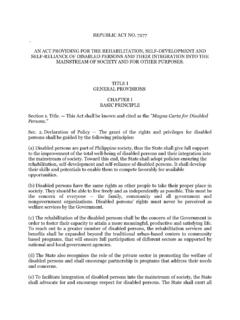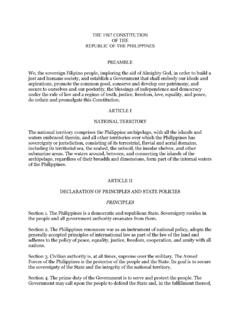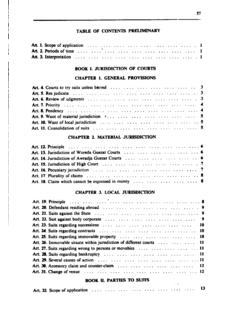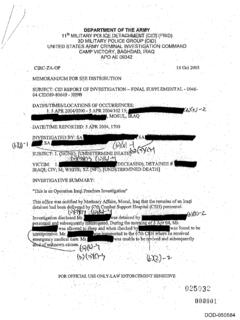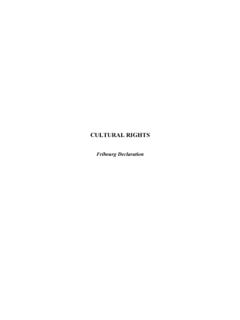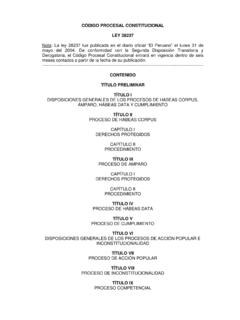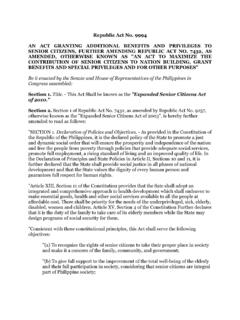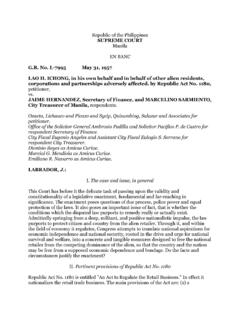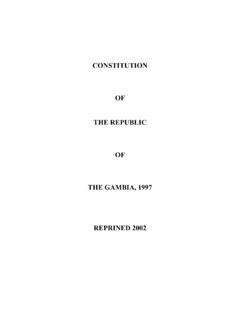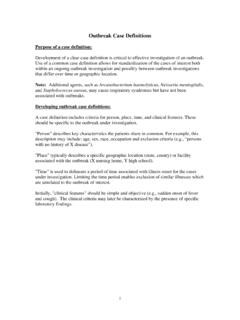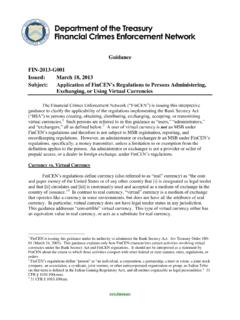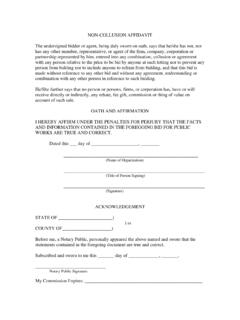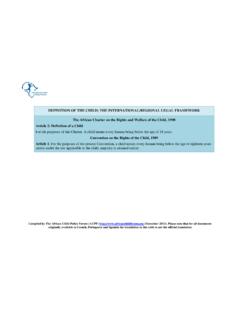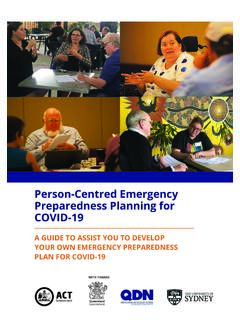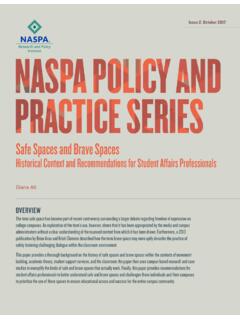Transcription of 58- The Rule On The Writ Of Amparo
1 THE RULE ON THE WRIT OF Amparo SUPREME COURT OF THE PHILIPPINES SECTION 1. Petition. The petition for a writ of Amparo is a remedy available to any person whose right to life, liberty and security is violated or threatened with violation by an unlawful act or omission of a public official or employee, or of a private individual or entity. The writ shall cover extralegal killings and enforced disappearances or threats thereof. SEC. 2. Who May File. The petition may be filed by the aggrieved party or by any qualified person or entity in the following order: (a) Any member of the immediate family, namely: the spouse, children and parents of the aggrieved party; (b) Any ascendant, descendant or collateral relative of the aggrieved party within the fourth civil degree of consanguinity or affinity, in default of those mentioned in the preceding paragraph; or (c) Any concerned citizen, organization, association or institution, if there is no known member of the immediate family or relative of the aggrieved party.
2 The filing of a petition by the aggrieved party suspends the right of all other authorized parties to file similar petitions. Likewise, the filing of the petition by an authorized party on behalf of the aggrieved party suspends the right of all others, observing the order established herein. SEC. 3. Where to File. The petition may be filed on any day and at any time with the Regional Trial Court of the place where the threat, act or omission was committed or any of its elements occurred, or with the Sandiganbayan, the Court of Appeals, the Supreme Court, or any justice of such courts. The writ shall be enforceable anywhere in the Philippines. When issued by a Regional Trial Court or any judge thereof, the writ shall be returnable before such court or judge.
3 When issued by the Sandiganbayan or the Court of Appeals or any of their justices, it may be returnable before such court or any justice thereof, or to any Regional Trial Court of the place where the threat, act or omission was committed or any of its elements occurred. When issued by the Supreme Court or any of its justices, it may be returnable before such Court or any justice thereof, or before the Sandiganbayan or the Court of Appeals or any of their justices, or to any Regional Trial Court of the place where the threat, act or omission was committed or any of its elements occurred. SEC. 4. No Docket Fees. The petitioner shall be exempted from the payment of the docket and other lawful fees when filing the petition.
4 The court, justice or judge shall docket the petition and act upon it immediately. SEC. 5. Contents of Petition. The petition shall be signed and verified and shall allege the following: (a) The personal circumstances of the petitioner; (b) The name and personal circumstances of the respondent responsible for the threat, act or omission, or, if the name is unknown or uncertain, the respondent may be described by an assumed appellation; (c) The right to life, liberty and security of the aggrieved party violated or threatened with violation by an unlawful act or omission of the respondent, and how such threat or violation is committed with the attendant circumstances detailed in supporting affidavits.
5 (d) The investigation conducted, if any, specifying the names, personal circumstances, and addresses of the investigating authority or individuals, as well as the manner and conduct of the investigation, together with any report; (e) The actions and recourses taken by the petitioner to determine the fate or whereabouts of the aggrieved party and the identity of the person responsible for the threat, act or omission; and (f) The relief prayed for the petition may include a general prayer for other just and equitable reliefs. SEC. 6. Issuance of the Writ. Upon the filing of the petition, the court, justice or judge shall immediately order the issuance of the writ if on its face it ought to issue.
6 The clerk of court shall issue the writ under the seal of the court; or in case of urgent necessity, the justice or the judge may issue the writ under his or her own hand, and may deputize any officer or person to serve it. The writ shall also set the date and time for summary hearing of the petition which shall not be later than seven (7) days from the date of its issuance. SEC. 7. Penalty for Refusing to Issue or Serve the Writ. A clerk of court who refuses to issue the writ after its allowance, or a deputized person who refuses to serve the same, shall be punished by the court, justice or judge for contempt without prejudice to other disciplinary actions.
7 SEC. 8. How the Writ is Served. The writ shall be served upon the respondent by a judicial officer or by a person deputized by the court, justice or judge who shall retain a copy on which to make a return of service. In case the writ cannot be served personally on the respondent, the rules on substituted service shall apply. SEC. 9. Return Contents. Within seventy-two (72) hours after service of the writ, the respondent shall file a verified written return together with supporting affidavits which shall, among other things, contain the following: (a) The lawful defenses to show that the respondent did not violate or threaten with violation the right to life, liberty and security of the aggrieved party, through any act or omission; (b) The steps or actions taken by the respondent to determine the fate or whereabouts of the aggrieved party and the person or persons responsible for the threat, act or omission.
8 (c) All relevant information in the possession of the respondent pertaining to the threat, act or omission against the aggrieved party; and (d) If the respondent is a public official or employee, the return shall further state the actions that have been or will still be taken: (i) to verify the identity of the aggrieved party; (ii) to recover and preserve evidence related to the death or disappearance of the person identified in the petition which may aid in the prosecution of the person or persons responsible; (iii) to identify witnesses and obtain statements from them concerning the death or disappearance; (iv) to determine the cause, manner, location and time of death or disappearance as well as any pattern or practice that may have brought about the death or disappearance; (v) to identify and apprehend the person or persons involved in the death or disappearance; and (vi) to bring the suspected offenders before a competent court.
9 The return shall also state other matters relevant to the investigation, its resolution and the prosecution of the case. A general denial of the allegations in the petition shall not be allowed. SEC. 10. Defenses not Pleaded Deemed Waived. All defenses shall be raised in the return, otherwise, they shall be deemed waived. SEC. 11. Prohibited Pleadings and Motions. The following pleadings and motions are prohibited: (a) Motion to dismiss; (b) Motion for extension of time to file return, opposition, affidavit, position paper and other pleadings; (c) Dilatory motion for postponement; (d) Motion for a bill of particulars; (e) Counterclaim or cross-claim; (f) Third-party complaint; (g) Reply; (h) Motion to declare respondent in default; (i) Intervention; (j) Memorandum; (k) Motion for reconsideration of interlocutory orders or interim relief orders; and (l) Petition for certiorari, mandamus or prohibition against any interlocutory order.
10 SEC. 12. Effect of Failure to File Return. In case the respondent fails to file a return, the court, justice or judge shall proceed to hear the petition ex parte. SEC. 13. Summary Hearing. The hearing on the petition shall be summary. However, the court, justice or judge may call for a preliminary conference to simplify the issues and determine the possibility of obtaining stipulations and admissions from the parties. The hearing shall be from day to day until completed and given the same priority as petitions for habeas corpus. SEC. 14. Interim Reliefs. Upon filing of the petition or at anytime before final judgment, the court, justice or judge may grant any of the following reliefs: (a) Temporary Protection Order.
![Cap. 23] CHILDREN AND YOUNG PERSONS](/cache/preview/a/e/5/4/4/e/e/6/thumb-ae544ee647db019dff09ed2c401367af.jpg)
